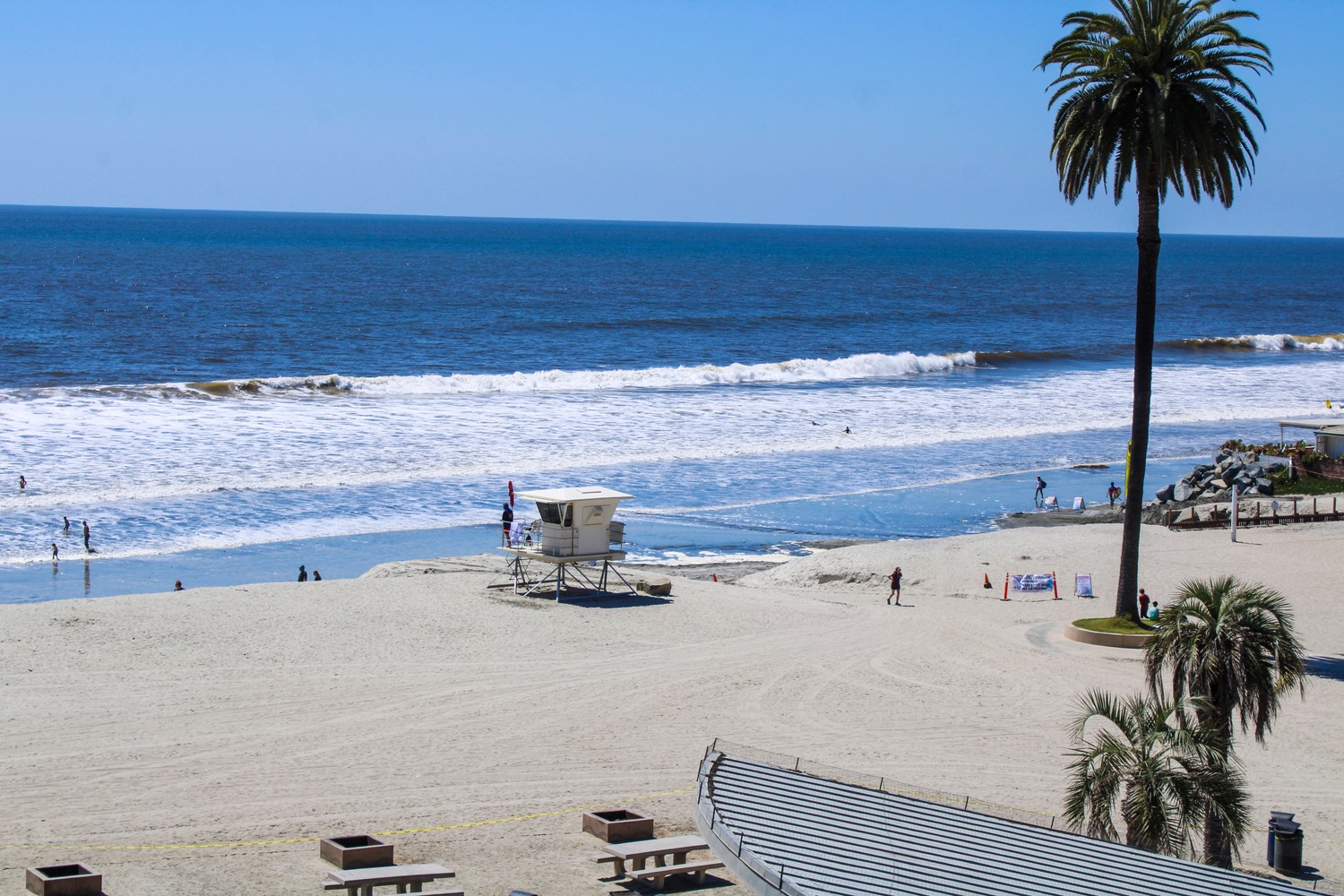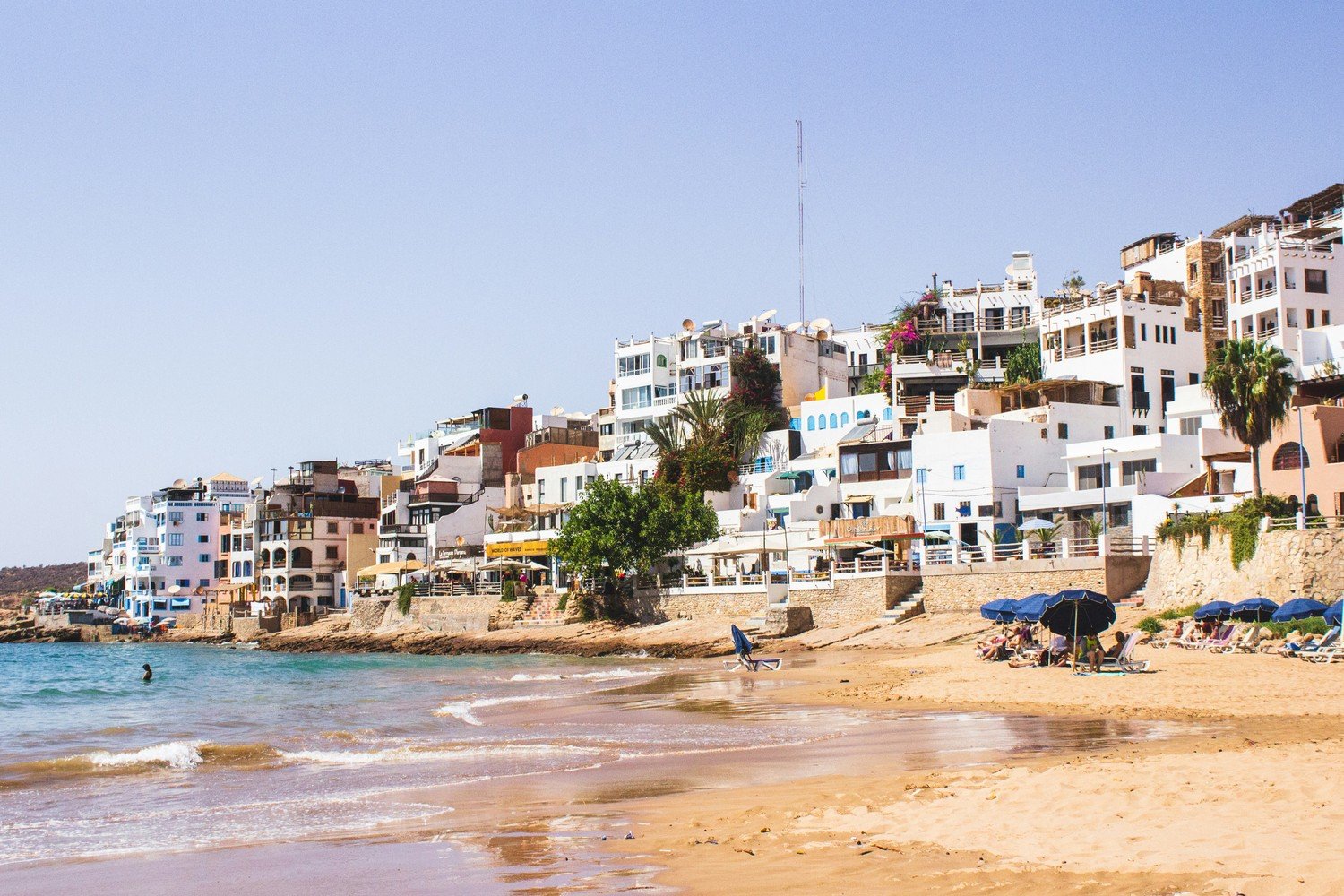
Destination or Hotel
Departure Airports
Travel Dates
Flexible +/-3 days
Nights
Flexible +/-3 days
Guests
Price Match Promise
Flexible +/-3 days
Price Match Promise

Exploring the Villages of Cyprus
By
Ricky Durrance
04 Apr 2022
Whilst lazing on the beach is lovely, when in a new exciting country it is really valuable to get a feel of what the country is like away from the tourist traps, and Cyprus is no different.
Away from its rugged coast line, lies the Troodos mountain range with old traditional villages nestled in the valleys, foothills and slopes of pine covered forests, starting at a few hundred feet above sea level, all the way up to the top. Many of these villages are often collectively referred to as Krassohoria, meaning wine villages as most vine cultivation lies in the slopes of the Troodos mountain range. This means that you will also come across a host of wineries along the way that you can visit, sample some wines and buy some to take back with you.
Visiting these villages, many of which are now homes to UNESCO World Heritage sites, will give you an insight into the real Cyprus, its history, and of course its scenic mountainous and pine forest landscapes. They are a big part of Cyprus’s history, rural culture and identity and we suggest a few villages that must be visited during your holiday in Cyprus.
Hiring a car in Cyprus is straightforward, roads are well signposted in English and unlike other European destinations, driving in Cyprus in on the left! We suggest you hire a car and drive up to the Troodos mountain range where you’ll get to experience how Cyprus was before the influx of mass tourism.
Lefkara
Famous all around the world for its traditional handicrafts of lace embroidery and filigree silverware, Lefkara lies in the foothills of the Troodos Mountain range at an altitude of 650 metres. The tradition of lace making dates back to at least the 14th century and in 2009 it was added to the UNESCO Representative List of the Intangible Cultural Heritage of Humanity. Rumour has it that Leonardo Da Vinci once visited this beautiful village to buy a large ornate table cloth which he donated to the Duomo Cathedral in Milan.
Stroll through Lefkara’s cobblestoned lanes to discover age-old traditions with numerous shops and workshops dotted around the area selling the finest silverware jewellery and trinkets, lace embroidery, vases and more. Houses are all built in the traditional folkloric architecture made with local white stone, capped with characteristic terracotta roofs and wooden balconies. The village church, dedicated to the Holy Cross and dates back to the 14th century. You can watch the lace and silver being made at the Lefkara Handicraft Centre and the Museum of Traditional Embroidery and Silversmiths. An old fountain and olive press add to the remarkable beauty of this village. Lefkara has also seen a recent revival with new cafes, wine bars and restaurants providing the village with a modern stamp.
Kakopetria
On the foothills of the Troodos mountain range, in the Solea Valley, probably the most famous village is Cyprus, Kakopetria sits at an altitude of 667 metres, surrounded by green forests and streams. Two rivers Kargotis and Garillis join inside the village and form the river Klarios, which crosses the Solea Valley. Kakopetria offers up a true taste of authentic Cyprus. This beautiful village is a popular summer resort home to breath-taking scenery of pine forests, rivers and streams that stretch across the valley. The old quarter, with its narrow, stone-paved alleys and its traditional houses with their wooden balconies which have now been restored, has been declared a protected cultural heritage site. The village is also home to an old watermill which was used to grind barley and grain from 1754 and was closed down after the Second World War. This has now been restored and is well worth a visit while you are in the village as it the Olive Press Museum and The Church of the Transfiguration of our Saviour which is in the centre of the old village centre. And when you get hungry, Kakopetria has quite a few places to choose from to have something to eat.
Fyti
At an altitude of 680 metres, on a plateau, the village of Fyti has existed since Medieval Times. It has preserved it traditional folkloric architecture and local handicrafts, including that of weaving which it is famous for. The church of Agios Demetrios, in the village square dates from 1854. There is a cross with two green dragons on the top and inside, it houses a stunning crystal chandelier and features a beautiful, well-preserved 19th century altar screen.
As the main weaving centre of the region, the hand-woven pieces are known locally as ‘fythkiotika’, and are distinguished both for the variety of their patterns and their rich and vibrant colours. The village’s Museum of Traditional Weaving and Traditional Art showcases this custom, as well as housing tools used in traditional agriculture and for making donkey equipment. The main attraction of the museum is the traditional weaver including a fully operational wheel that turns and dates back to the medieval times.
Kalopanayiotis
Deep in the Marathassa Valley, at an altitude of 700 metres, this village is famed for its sulphur springs, traditional architecture, and the Venetian bridge as well as and the striking UNESCO Heritage site of Agios Ioannis Lampadistis Monastery which features three Byzantine churches with well-preserved frescos dating back to the 9th and up to the 15th century. The 16th century Bridge was constructed from local stone and until recently served as the only access between the village and the monastery. Kalopanayiotis is also home to the Kykko watermill which has been declared a ‘cultural heritage monument’ by the Cyprus Department of Antiquities and is an imposing site, characteristic of the pre-industrial architectural period.
Kalopanagiotis’ charm with its old chapels and churches, the quaint, cobbled streets and footpaths should not be missed. This is probably the most mountainous village as far as its terrain is concerned. Its steep and narrow cobbled streets look down on the valley below and it is best explored on foot. If you don’t fancy walking up and down the steep slopes, there is a short funicular from the car park that you can use.
Pachna
Nestled between four hills, at an altitude of 750 metres above sea level the name Pachna is thought to originate from the ancient Greek word pachni which relates to the morning white frost found on leaves following a chilly night. Chalky soil, its elevation and climate, have made Pachna an ideal location for vine cultivation and with over 800 hectares of land cultivated, it is one of the largest grape producing villages in Cyprus. The vast majority of the cultivated grapes are the local varieties of Mavro, a red grape indigenous to Cyprus and which accounts for most of the red wines in Cyprus and Xynisteri, a white grape indigenous to Cyprus and which accounts for the majority of white wines. Both grapes are mixed to produce Commadaria, a sweet red wine and the oldest wine in the world, still in production today, as well as Zivania, a local grape spirit. If you fancy some wine tasting, there are two local wineries here for you to sample some of the produce. There are two main churches in the village those of St George and St Paul. Most of these older buildings and houses are traditionally built in the local Pachna stone which has its own unique chalky yellow character and with their terracotta rooftops, offer a scenic view against the green forest backdrop.
Omodos
With its name originating from the Greek word for street, Odos, the pretty, wine producing village of Omodos sits at an altitude of 800 metres on the Troodos mountain range and is popular for those who like wine, history and artistry. Famous for its wine, Zivania spirit, handmade narrow-knit lacing and arkatena bread, a crisp bread made with leaven using the foam produced from chickpea fermentation called Arktis.
Despite its small size, Omodos has enough interesting sites. Located within close proximity of each other are its narrow cobbled streets and village square, old stone houses, local wineries, arkatena producing bakeries, a medieval wine press, a centre for the preservation of narrow-knit lacing and the Holy Cross Monastery with its old icons and wood carvings. It is believed that the monastery is home to a piece of the True Cross. The main square forms a hub of activity, dotted with cafes, restaurants and shops and throughout the village you will notice shops with brightly decorated tables with fresh bread, arkatena, sweets, nuts, glassware and gorgeous homemade arts and crafts, including woodwork, lacework and a plethora of traditional goods.
On 14 September every year, the village holds one of the biggest religious fairs on the island, dedicated to the Holy Cross.
Koilani
The Charming village of Koilani sits at an altitude of 820 metres, close to the west bank of the River Kryos. This picturesque village with narrow cobbled streets has retained its character and folkloric architecture with terracotta tiled roofed houses traditionally build from the Koilani stone, full of intricate wooden balconies, lofts and arches and is another one of the island’s main vine cultivators. The village chapel, Ayia Mavri sits in the shade of one of the biggest plane trees on the island and traditional earthenware jars decorate many of the gardens. The village is famous for its wines and other grape products and many homes retain their old equipment for the production of wine or the distilling of the strong spirit Zivania. The viticulture and the ecclesiastical museums, the olive mill and of course the wineries are also major attractions.
An annual Grape Feast is held at the village on the first Sunday of October, and also in mid-November, where visitors can watch how the locals make traditional delicacies from grape juice, and sample them with their compliments. There is also folkloric music and dancing, as well as wine tasting which is a must when on a cheap Cyprus holiday.
Panayia
Famous as the birthplace of Archbishop Makarios III, the first president of the Republic of Cyprus, this village enjoys an idyllic location, set high on mountain peaks within the Paphos Forest at an altitude of 850 metres with panoramic views across the nearby Kannaviou Dam and beyond. This village is home to many churches, monasteries and wineries. Its name comes from Panagia (the Virgin Mary), to whom the neighbouring monastery of Panagia Chrysorrogiatissa is also dedicated. The Monastery dates back to 1152. It was established by monk Ignatios who dedicated it to Our Lady of the Pommegranate Panagia Chrysorrogiatissa, and it’s certainly worth a visit with its spectacular courtyard and breath-taking views from the monastery’s gardens. The monastery houses an interesting Icons and Utensil Treasury and unsurprisingly, has its own winery so you can sample and buy a bottle or two during your visit.
Platres
Another top wine producing village, Platres, surrounded by cedar pine forests, is perched on a hillside with the lower part of the village (Kato Platres) at the bottom and the top of the village further up, at an altitude of 1,100 metres. Despite its small size Platres has proved popular with visitors and it has seen a selection of hotels built in and around it in the 20th century. Famous guests at Platres include, King Farouk of Egypt, Daphne du Maurier (it is rumoured she was inspired to write her famous book Rebecca during her visit to Platres), Vivien Leigh, Lawrence Olivier and the Greek Poet Georgos Seferis who mentions Platres in one of his most famous poems.
Aside from its famous visitors, stunning nature trails and charming old buildings, popular sites include the medieval Milia Bridge, the Caledonia Waterfall which tumbles from a height of twelve metres, a chocolate workshop, an adventure rope park and an exhibition at its Cultural Centre which incorporates old photos of the village, and of the Greek poet Georgos Seferis. And of course, being a wine producing village, you will find a winery in Kato Platres. There is also a good selection of tavernas and restaurants to choose from if you decide to make this a lunch stop.
Pedoulas
High in the Troodos mountain range, at an altitude of 1,100 metres lies the charming village of Pedoulas with its natural spring. Surrounded by dense pine forest and low lying cloud it has an alpine feel to it and temperatures here are generally 10 degrees cooler than sea level so this will be a welcome break from the heat of the summer months. Its location is ideal for cultivation and orchards of cherry and other trees surround the village. Apart from its production of cherries and other fruits, Pedoulas is known for its 12 churches, varying from a 15th-century chapel to a 1930s cathedral, the most important of which is the UNESCO World Heritage-listed church: Church of Archangel Michael which was built in 1474 out of the native stone and has a unique outer shape which you could not imagine houses a church. There are also two museums to visit here, the Byzantine museum which houses icons and relics from the 13th – 20th century and the Folklore museum which exhibits day to day life customs and traditions of the past including how chairs were made and how they used to produce the local spirit Zivania. It is said that drinking the natural spring water in this village gifts you eternal youth so be sure to take big gulps!
Agros
Agros is nestled in stunning scenery with panoramic forest views at an altitude of 1,100 metres in the Pitsilia region of the mountain range. The layout of this picturesque village resembles that of an amphitheatre theatre, as it curves around the hillside embraced by the surrounding mountains.
It has maintained its traditional character and customs and a wide variety of fruits and vegetables are grown here but the village is most famous for the cultivation of roses, and the production of cured meats (sausages, ‘Lountza’ and ‘Hiromeri’). You can see these traditional practises at the local workshops where rose oil distillation, and meat processing take place. Between the months of April and May the hillsides are pink with thousand roses called the Rose of Damascus in full bloom. You can learn what happens to the roses at the Rose Factory housed in the village.
As you can see there is plenty to see and explore when on a Cyprus 2022 holiday that isn’t in most travel brochures. So get off the beaten track and go exploring!
40,000+ verified
customer reviews
Loading reviews...
Expert AdviceWhere to go & when

Millions of
happy customers

Over 30 years
travel experience

Triple Lock Protection
ATOL, TTA, Secure Trust


Low Deposit
from £49pp

24x7 in-resort
Support

ATOL & TTA
Protected

Pay monthly
Spread the cost
We want all our customers to stay safe when abroad. For the latest travel advice from the Foreign, Commonwealth & Development Office click here. Further advice can be found on the Travel Aware page here. Please note the advice can change so check regularly for updates and before you travel.
teletextholidays.co.uk acts as an agent in respect of all bookings made by telephone. For all bookings, your contract will be with the applicable Service Provider of your chosen Travel Service (who may be the principal or the agent of the principal) and Teletext acts only as an agent on their behalf. Your holiday will be financially protected by the ATOL scheme and you will receive an ATOL certificate once your booking has been confirmed. Please see our booking conditions for information, or for more information about financial protection and the ATOL Certificate go to:www.caa.co.uk/atol-protection
*We are able to offer a price match if suppliers are the same.
Teletext Travel Ltd, company number 14855829. Address: 71-75 Shelton Street, Covent Garden, London, United Kingdom, WC2H 9JQ.
Copyright 2025 teletextholidays.co.uk | All rights reserved.






